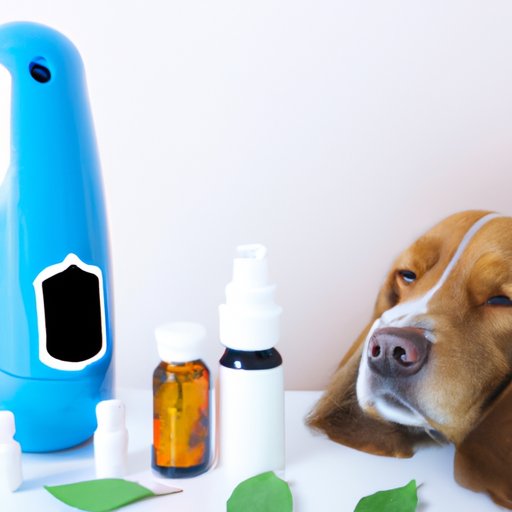Introduction
Dog allergies are a common problem for many pet owners. An allergic reaction occurs when the body’s immune system overreacts to an allergen, such as fur or saliva from a dog. Symptoms of a dog allergy can range from mild to severe, including sneezing, coughing, watery eyes, and rashes. It is important to identify the source of the allergy in order to find the best treatment.
Identify the Source of Allergies
The first step in treating dog allergies is to determine if fur or saliva is the cause. If fur is the culprit, there are several ways to reduce exposure, such as brushing the dog regularly, washing bedding and furniture frequently, and using special vacuums and air purifiers. For those with a saliva allergy, it is important to avoid contact with the dog, such as avoiding licking and kissing, and washing hands after touching the dog.
Avoid Contact
For those with a severe allergy, it is important to minimize contact with dogs. This may include wearing a mask when handling the dog, keeping the dog out of the bedroom, and avoiding petting and cuddling. For those who must be around dogs, consider taking antihistamines before and after contact.
Use Medications
Antihistamines are the most common treatment for allergies and can help reduce symptoms such as sneezing, itching, and watery eyes. Nasal sprays can also be used to reduce inflammation in the nasal passages. It is important to talk to your doctor before taking any medications, as there may be side effects or interactions with other medications.
Keep the Dog Clean
Regularly washing and grooming the dog is an important part of reducing allergens. Bathing the dog weekly and brushing daily can help reduce the amount of dander in the home. Vacuuming regularly can also help reduce the amount of dander in carpets and furniture.
Vacuum Regularly
Vacuuming often is an effective way to reduce allergens in the home. Using a high-efficiency particulate air (HEPA) filter vacuum can help trap more allergens than a standard vacuum. Additionally, using an air purifier can help reduce allergens in the air.
Consider Allergy Shots
Allergy shots, also known as immunotherapy, can be a long-term solution for those with severe allergies. According to a study by The Journal of Allergy and Clinical Immunology, “Immunotherapy is an effective and safe treatment for allergic rhinitis caused by cat and dog allergens.” Talk to your doctor about the benefits and risks of allergy shots.
Conclusion
While it may not be possible to completely eliminate dog allergies, there are several steps that can be taken to reduce symptoms. Identifying the source of the allergy and avoiding contact with the dog are key to reducing reactions. Additionally, taking medications, keeping the dog clean, vacuuming regularly, and considering allergy shots can all help reduce symptoms. With the right treatment plan, it is possible to reduce the severity of dog allergies.
(Note: Is this article not meeting your expectations? Do you have knowledge or insights to share? Unlock new opportunities and expand your reach by joining our authors team. Click Registration to join us and share your expertise with our readers.)
